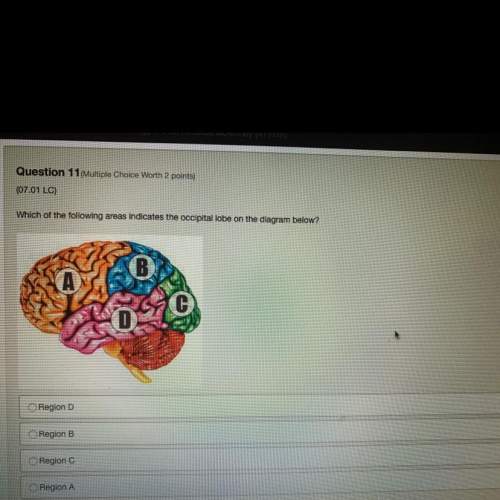O Endoplasmic Reticulum

Biology, 12.11.2020 21:10 mattie2353
Which of the following is found ONLY in plant cells?
O Cytoplasm
O Endoplasmic Reticulum
O Nucleus
O Chloroplast

Answers: 1


Another question on Biology

Biology, 21.06.2019 20:00
Read the following scenario to answer the following question. over the past 60 years, many amphibian species have experienced significant population declines, and some species have become extinct. scientists suspected that local human activities such as the destruction of wetlands, regional pollution, and deforestation were the main reasons for these losses. however, research over the past 20 years reveals significant amphibian population declines in protected areas of the world, such as nature preserves and parks. these global declines suggest widespread problems including increased ultraviolet radiation, acid rain, and disease. in switzerland, for example, 14 of the 20 native amphibian species are threatened with extinction. when most populations of a wide-ranging amphibian species are lost and the few remaining populations are widely separated, we expect to see that a. the founder effect becomes increasingly important b. microevolution no longer occurs c. gene flow between populations is reduced d. artificial selection becomes a greater factor in microevolution
Answers: 2

Biology, 22.06.2019 02:00
Many farmers prefer cattle without horns because it is safer for their herds. the allele for no horns (n) is dominant to the allele for the presence of horns (n). a farmer mates a male with horns to a heterozygous female without horns. what is the chance that the offspring will have horns?
Answers: 1

Biology, 22.06.2019 04:00
Will mark brainliest i only need the ! 1.use ten beads and a centromere of one color to construct the long chromosome. use ten beads and a centromere of a second color to construct the second chromosome in the long pair. make a drawing of the chromosomes in the space below. 2. for the second pair of chromosomes, use only five beads. 3. now model the replication of the chromosomes. make a drawing of your model in the space below. part b: meiosis i during meiosis i, the cell divides into two diploid daughter cells. 4. pair up the chromosomes to form tetrads. use the longer tetrad to model crossing-over. make a drawing of the tetrads in the space below. 5. line up the tetrads across the center of your “cell.” then model what happens to the chromosomes during anaphase i. 6. divide the cell into two daughter cells. use the space below to make a drawing of the result. part c: meiosis ii during meiosis ii, the daughter cells divide again. 7. line up the chromosomes at the center of the first cell, one above the other. separate the chromatids in each chromosome and move them to opposite sides of the cell. 8. repeat step 7 for the second cell. 9. divide each cell into two daughter cells. use the space below to make a drawing of the four haploid cells
Answers: 1

Biology, 22.06.2019 07:00
Which best describes a gene? a. a sister chromatid b. a chromosome c. a tetrad d. a piece of a chromosome
Answers: 2
You know the right answer?
Which of the following is found ONLY in plant cells?
O Cytoplasm
O Endoplasmic Reticulum
O Endoplasmic Reticulum
Questions



Computers and Technology, 08.01.2021 01:00



Mathematics, 08.01.2021 01:00




Social Studies, 08.01.2021 01:00

Mathematics, 08.01.2021 01:00

Mathematics, 08.01.2021 01:00


History, 08.01.2021 01:00


Mathematics, 08.01.2021 01:00



Geography, 08.01.2021 01:00

Mathematics, 08.01.2021 01:00




